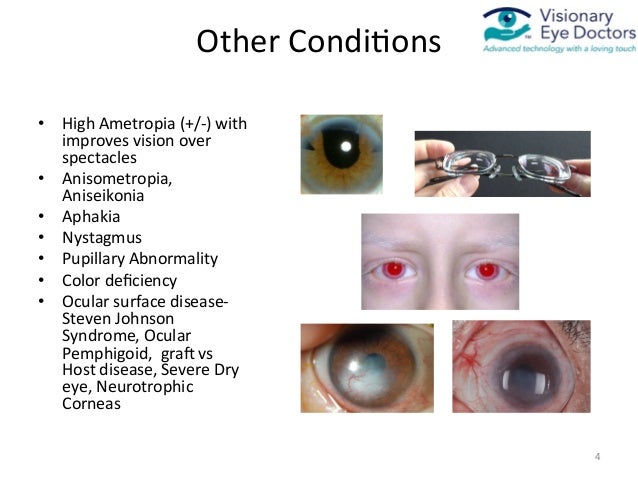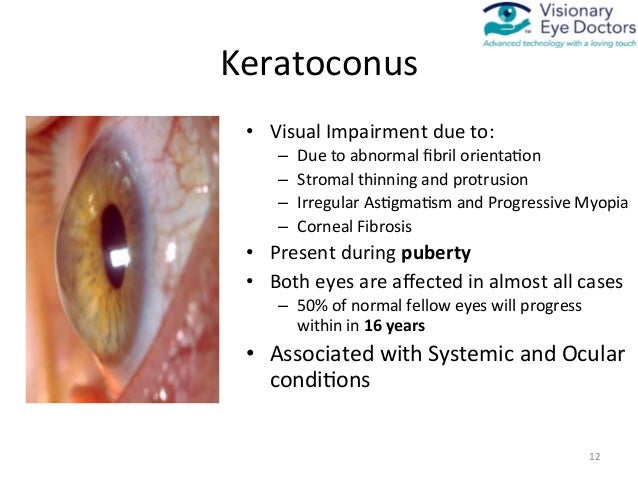Beyond irregular cornea indications specialized custom contact lenses are typically also appropriate for most medically necessary criteria like. Eyeglass prescription is -800 or 800 diopters 2.
Contact lenses are defined as medically necessary when the patient has an eye disease or prescription that has to be managed with contacts because glasses cant provide sufficient correction.

Medically necessary contact lenses high myopia. Scleral Lenses Beyond the Borders Large diameter ResBng point beyond the corneal borders Among the best vision correcBon intervenBon among contact lenses for irregular corneas Decrease the risk for corneal scarring 59. And eyeglass best corrected visual acuity of 2040 or worse in either eye 3. Criteria that qualify as medically necessary include corneal irregularities eg keratoconus and post-surgical corneal complications high myopia -10D and hyperopia 10D and aphakia.
24 Contact lenses are usually covered when vision correction by custom lenses yields far superior visual outcomes than conventional spectacles. Examples of diagnoses that may qualify for medically necessary contact lenses are keratoconus aphakia post-corneal transplant corneal dystrophies ametropia and anisometropia. Ortho-K uses custom GP contact lenses to reshape the cornea to temporarily reduce refractive error.
This number tends to fluctuate a little bit each time I go because it is hard to read my highly myopic. Contact Lenses may be determined to be medically necessary in the treatment of the following nine conditions. Criteria that qualify as medically necessary include corneal irregularities eg keratoconus and post-surgical corneal complications high myopia -10D and hyperopia 10D and aphakia.
Any type of contact lens. Medically and visually necessary contact lens services are covered in full or in part by third party payers for those patients whose visual experience and function is significantly improved through the use of contact lenses rather than spectacle lenses Some insurances additionally offer full coverage of spectacle lenses not frames to wear over medically necessary contact lenses. - Keratoconus - Progressive Myopia - Anisometropia - Post Cataract - Aphakia - Pathological Myopia - Diabetes - Aniseikonia - Aniridia - Corneal Disorders - Post-Traumatic Disorders -.
The goal of medically necessary contact lenses MNCLs is to restore functional vision in individuals with an ocular pathology for whom standard spectacle or contact lens correction does not provide an adequate improvement in vision. Highly myopic eyes My current prescription taken from the phoropter the machine used to check your vision with different lenses in your doctors office is a -15 in one eye and a -14 in the other. High ametropia exceeding -10D or 10D in meridian powers.
They found that only the high-add power contact lenses produced meaningful slowing of eye growth. ICD-10-CM Codes for Medically Necessary Contact Lens Prescribing Code Descriptor ICD-10 Code Progressive high degenerative myopia H4423 Hypermetropia H5203 Myopia H5213 Astigmatism regular H52229 Astigmatism irregular H52219 Anisometropia H5231 Aniseikonia H5232 Presbyopia H524 Protan defect H5354 Deutan defect H5453. Medically necessary contact lens benefit that pay in a range from terrible spectera superior vision to fairly reasonable vsp and eyemed.
In addition to multifocal lenses other myopia control options include orthokeratology contact lenses which are worn overnight to reshape the cornea or low-dose atropine eye drops used at bedtime. High myopia can be corrected with glasses or contact lenses. 24 Contact lenses are usually covered when vision correction by custom lenses yields far superior visual outcomes than conventional spectacles.
Coverage is provided for one pair of eyeglasses standard prescription lenses and standard non-deluxe frames or one set of contact lenses per benefit year. We have a wide variety of contact lenses that go as high as -1200 for standard lenses and -2000 for contact lenses such as Biofinity XR and for those who have astigmatism Proclear Toric XR. 2 Ortho-K is primarily used as a correction for low-to-moderate myopia up to -600D with or without astigmatism up to -175D.
The use of medically necessary contact lenses can decrease glare improve warped vision and improve visual acuity from an average best corrected vision of 2070 to an average of 2032 Severinsky 2010. Contact lenses with a dioptre of -500 or more are generally prescribed to correct high myopia. High myopia more than 140 diopters Persistent epithelial defects Post corneal transplant perforations Aniridia Note.
High myopic or hyperopic. Maculopathy and high myopia-associated optic neuropathy and that can lead to loss of best corrected visual acuity1 1flitcroft d i et al. 1 Contact lenses are defined as medically necessary if the individual is diagnosed with one of the following specific conditions.
And visual acuity improvement of 2 lines or more with contact lenses Anisometropia. H4420 H4421 H4422 And H4423 1. Binocular vision issues caused by the presence of nystagmus anseikonia and anisometropia as well as glare and light.
Anisometropia of 3D in meridian powers.

